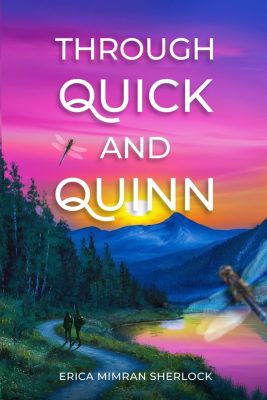|
Listen to or download this article:
|
If you liked Alice in Wonderland as a child, To Dream the Blackbane: A Novel of the Anomaly may captivate you now. While not suitable for children, this dark fantasy engages the reader with strange and unique characters, gritty, Sam Spade-like dialogue, and fanciful imagery.
In 2063, sixty years after The Anomaly, during which everything changed, in a world now populated by pedigreed humans, hybrids, and a whole gamut of imagined and legendary creatures from other planes of existence, the canis sapien, Wolfgang Rex, operates as a private eye in Chicago’s hybrid ghetto. He is assisted by his secretary, Sally Sandweb, a fun-loving faerie with blue and black wings, and green-tinged skin.
One evening, two locally venerated vampires barge into Wolfgang’s office to enlist his services. Like the Templar’s treasure was stolen from Jerusalem, a sacred vampire scroll was taken from their lair atop the Sears Tower whilst they slept. After they make him an offer he can’t refuse, Wolfgang agrees to recover the scroll, and a disapproving Sally draws up the contract.
Shortly after, he has another visitor, Charlotte Sweeney-Jarhadill, from Beggar Creek, Louisiana, who wishes to hire Wolfgang to exorcize the ghost of a Confederate soldier who’s been hanging around her home and bothering her. After another offer he can’t refuse, and deciding he has some leeway on time with the vampires, Wolfgang agrees to do the exorcism.
Little does he know that these two cases would involve life-threatening danger, and ultimately change the course of his life forever—whatever and wherever forever may be.
The ensuing story takes Wolfgang to stygian places in Chicago, and to rural Louisiana where Wolfie learns that reality is elusive, whom you can trust isn’t always clear, and there’s no safe place.
Like the 2063 reality imagined in this story, its tone and mood fluctuate. At times, Richard J. O’Brien’s story seems merely a dark fantasy—a kind of 21st century American gothic with unique settings and characters that keep the reader engaged. At other time, it feels more like a tongue-in-cheek, “gotcha” kind of yarn where the author uses satirical humor, exaggerated characters, and intriguing situations, to entertain fantasy fans. The story’s ambiguous ending contributes to this perception. We hope this means there is more to come!
One thing is certain, though, when you close the book a haunting suspicion may just well remain: has O’Brien used this genre as a vehicle for a symbolic allegory, addressing certain long-held religious beliefs and currently trending social and political events? In short, To Dream the Blackbane: A Novel of the Anomaly is a curious, provocative read that lingers on. One that we recommended.










Leave A Comment